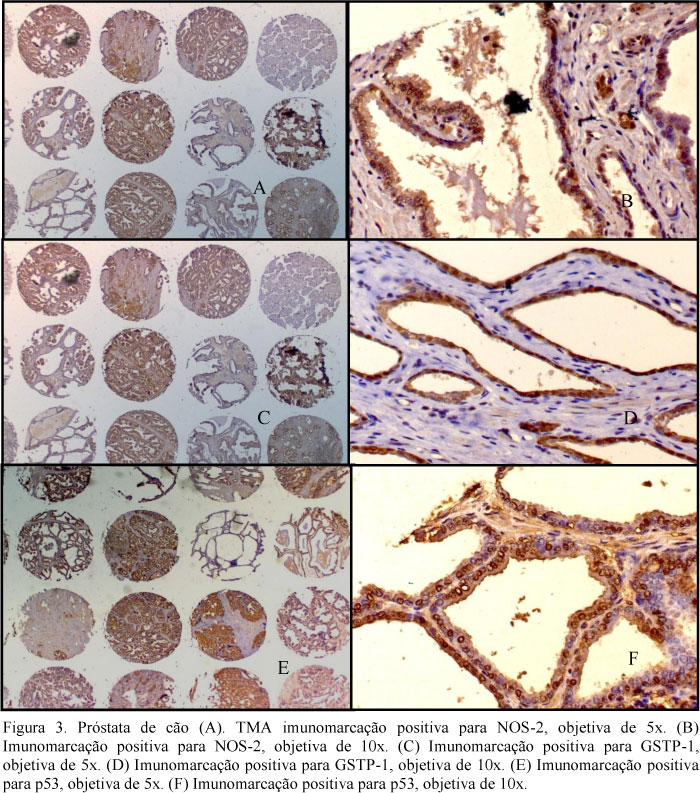A tissue microarray (TMA) with 149 samples of canine prostatic lesions contained 17.2% benign prostatic hyperplasia (BPH), 32.4% proliferative inflammatory atrophy (PIA), 2.6% prostatitis, 8.6% foci prostatic intraepithelial neoplasia (PIN), 29.1% carcinomas and 9.3% normal prostates. Sequential histological sections were made and used for immunohistochemistry reaction with primary antibodies anti p-53, anti-NOS-2 and anti-GSTP. The score for each antibody employed was evaluated. The results were tabulated by diagnostic group and subjected to Tuckey test. Prostatic carcinomas and PIA had a higher number of samples (41) with over 75% of cells positive for NOS-2, demonstrating the influence of oxidative stress in the development of these lesions. The prostates of normal dogs, as well as the disorders of this gland (BPH, PIA, PIN, prostatitis and carcinoma), expressed GSTP-1 protein, which gives protection to the canine prostate tissue against oxidative damage. The p53 protein was present in all samples studied, including normal prostate tissue, but the prostatic lesions had a higher number of samples with higher scores (more than 50% of positive cells), in 95% of foci of PIA and carcinoma. It was found that an increased expression of NO in prostatic lesions of dogs and that the expression of GSTP-1 can protect the canine prostate tissue, which would contribute to the low frequency of prostate adenocarcinoma in this species. The expression of p53 was positive in all lesions as well as the in normal prostate.
dog; prostate; immunohistochemistry; nitric oxide; GSTP-1; p53






